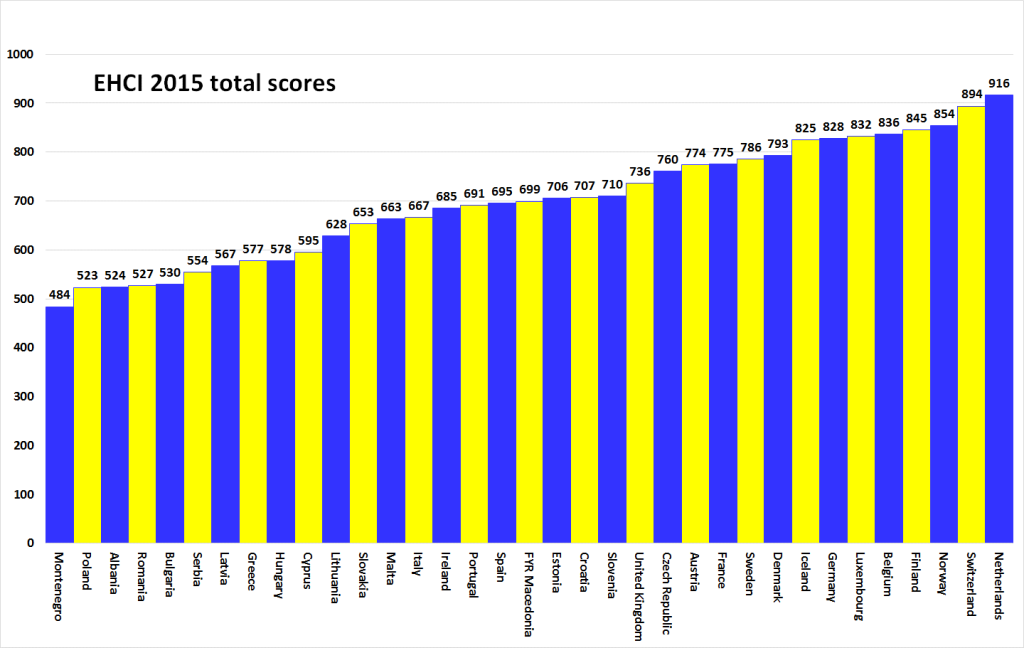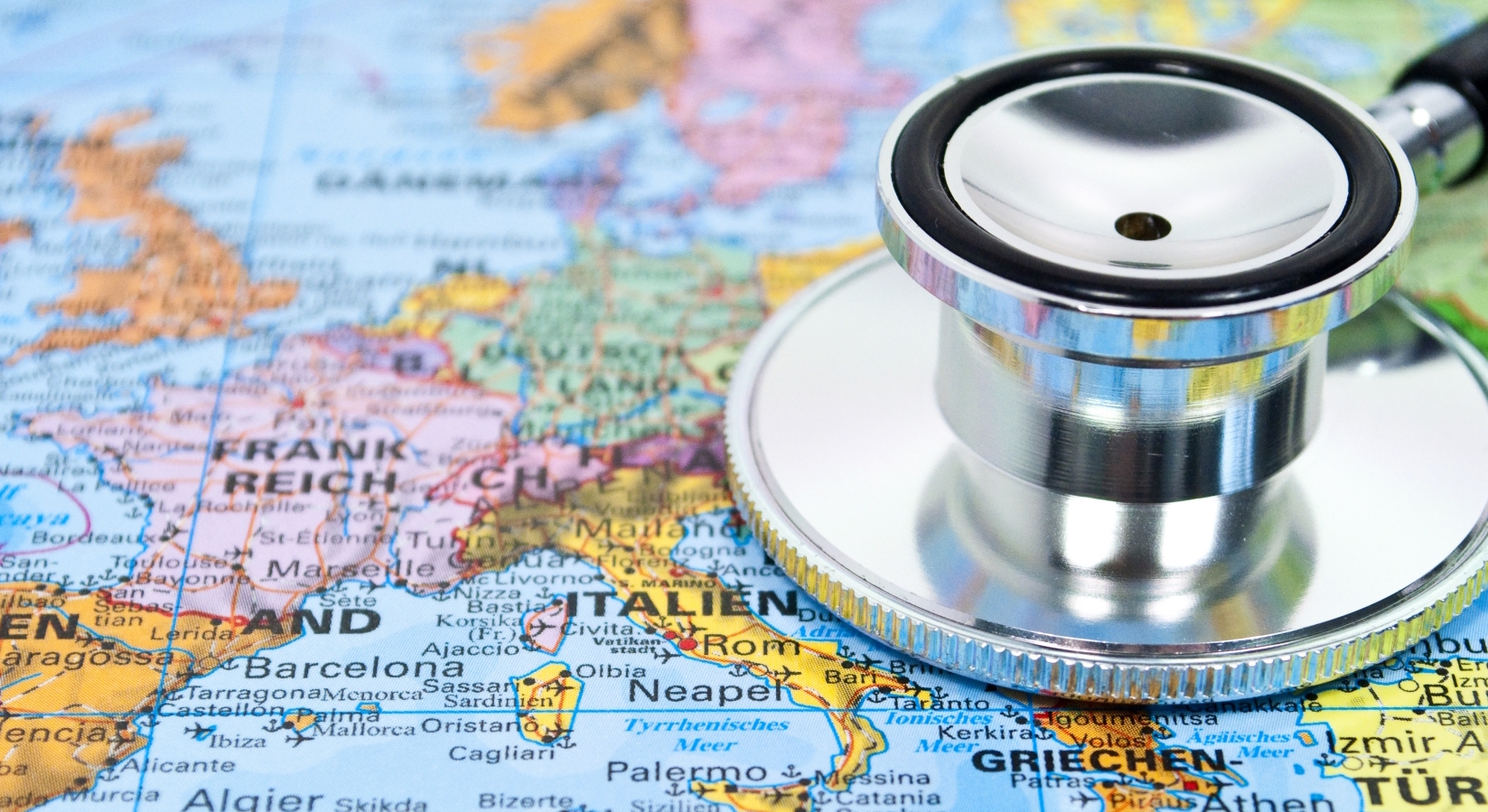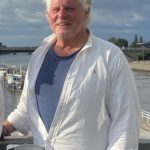The cool thing about being an expat is you get to choose your country, your country doesn’t choose you.
So if you’re country shopping and healthcare is part of your scoring algorithm, there’s only one country in Europe – and possibly one country in the world – that should have your attention: The Netherlands.
Stockholm-based health monitoring firm Health Consumer Powerhouse just released its latest rankings of Europe’s health care systems in Euro Health Consumer Index 2015. And the full 117-page study makes clear this index is about how consumer-friendly each system is, not solely how efficacious. That said, the report states clearly the Netherlands wins no matter what the criterion. That, and European health care is improving both on the consumer experience level and on the clinical level, especially in some of the former Soviet Bloc countries that had not performed well previously.
Okay, so what do the Dutch do that makes their system No. 1 on the 35-country EHCI?
The answer is pretty much, “Everything.” “The Dutch healthcare system does not seem to have any really weak spots, except possibly some scope for improvement regarding the waiting times situation, where some central European states excel,” the report states.
 Here’s the Top 10 from the EHCI rankings:
Here’s the Top 10 from the EHCI rankings:
- Netherlands, 916 points out of 1,000 possible.
- Switzerland, 894 points
- Norway, 854 points
- Finland, 845 points
- Belgium, 836 points
- Luxembourg, 832 points
- Germany, 828 points
- Iceland, 825 points
- Denmark, 793 points
- Sweden, 786 points
The EHCI report does a great job of adding context and showing how much almost all European nations have improved across the board. In its own summary, Health Consumer Powerhouse officials state the 2006 EHCI had France as the champion with 768 points out of 1000. “In the 2015 EHCI, the same performance would give just the 13th position among 35 countries. Top performance ten years ago has today become European average!” the report states.
If there is a theme running through the EHCI, it’s that too many Europeans spend too much time waiting for access to health care. No. 3 Norway spends the most on its system per capita, but loses points on “totally inexplicable waiting list situation!” (Exclamation theirs.)
The Netherlands climbed in the rankings by fixing accessibility, one of its few problems, according to the report. The country opened 160 primary care centers, with open surgeries 24 hours per day, 7 days per week. “Given the small size of the country, this should put an open clinic within easy reach for anybody,” the EHCI report states. No. 2 Switzerland is hugely wealthy, and doesn’t hesitate to spend on healthcare, so it’s place on the ranking is a given.
No. 3 Norway, which also has per-capita wealth comparable to the wealthiest European nations, gets dinged on wait times. “This has subsided significantly, but is still where Norway loses most of the points missing: 87 points compared with class leaders Belgium and Switzerland,” the report states.
The most interesting insights from the full report are about Germany, which has been up and down in the EHCI ranking. This year, Germany is No. 7, and the relatively low score for the biggest economy in Europe is due partly to the grumpy German healthcare consumer, who want access now, and wants it for free, according to the report. But Health Consumer Powerhouse officials penalized Germany for having too many general hospitals where treatment is mediocre, though improving.
Great Britain, which includes Wales, Scotland and Northern Ireland, is the lowest-rated of all the rich nations, ranked below the tiny Czech Republic:
The UK healthcare system has never made it into the top 10 of the EHCI, mainly due to poor accessibility (together with Poland and Sweden the worst among European healthcare systems) and an autocratic top-down management culture. The country, which once created the Bletchley Park code-breaking institution would do well to study the style of management of professional specialists created there!
The question for us is always, “How much weight do we give these surveys?” If you dive deep in to the main report, there are 117 pages of data to back up the findings. How the findings are interpreted … well, that’s another issue. But someone did a tremendous amount of research, so we give the EHCI two thumbs up.
Positives: The methodology is straightforward, ranking countries’ healthcare systems. The EHCI analyzes national healthcare using 48 indicators, looking into areas such as: patient rights and information; accessibility; outcomes; range and reach of services; prevention and pharmaceuticals.
Complaints: The 117-page report resorts a bit to often to jargon like the evaluators are covering a football match:
The EHCI 2015 total ranking of healthcare systems shows The Netherlands holding out against the onslaught of Switzerland; 894 points would, as late as 2013, have meant a very comfortable victory in the EHCI. However, the Netherlands is clinging on to the top position by breaking the 900 – point barrier for the first time in the EHCI, scoring 916 points!
Whatever.
The one takeaway is, though it’s never stated in the EHCI: You’re probably going to get better healthcare anywhere in Europe for much less money, and much faster, than in the United States.
Quick points (info from the report is in italics):
• The Netherlands is the only country which has consistently been among the Top 3 in the total ranking of any European Index the Health Consumer Powerhouse has published since its first index in 2005.
• Learning from successful neighbours would be a good recipe. Finland can teach how to get rid of long waiting lists, FYROM on implementation of e-health services, the Baltic states how to keep improving under severe financial crisis and the Netherlands how to further develop an already highly user-friendly system. Also negative experience can be valuable: do not copy the Swedish waiting time paralysis, the Hungarian and Polish performance down-slide or the uncontrolled Italian “regionalisation.” Finally, think about how come Greece claims to have cut the health budget with 28 percent – without any noticeable negative outcomes in the EHCI?
• Ireland, the UK and Sweden had the worst patient organization feedback on accessibility among the 35 countries.
 • Interestingly, the EHCI adjusts the rankings annual healthcare spending, which is stated in PPP-adjusted (Purchasing Power Parity) U.S. dollars. The PPP varies from less than $600 in Albania to about $6,000 in Norway, Switzerland, and Luxembourg. Continental Western Europe and Nordic countries generally fall between $3,000 and $5,000. When this formula is applied, the rankings get turned on their heads in terms of how much “bang-per-buck countries are getting.
• Interestingly, the EHCI adjusts the rankings annual healthcare spending, which is stated in PPP-adjusted (Purchasing Power Parity) U.S. dollars. The PPP varies from less than $600 in Albania to about $6,000 in Norway, Switzerland, and Luxembourg. Continental Western Europe and Nordic countries generally fall between $3,000 and $5,000. When this formula is applied, the rankings get turned on their heads in terms of how much “bang-per-buck countries are getting.Then, the rankings are:
- Macedonia
- Estonia
- Czech Republic
- Croatia
- Finland
- Albania
- Iceland
- Netherlands
- Belgium
- Lithuania
• Some eastern European EU member systems are doing surprisingly well, particularly the Czech Republic and Estonia, considering their much smaller healthcare spend in Purchasing Power Parity (PPP) adjusted dollars per capita. In 2014, the FYR Macedonia made the most remarkable advance in the EHCI scoring of any country in the history of the Index, from 27th to 16th place, largely due to more or less eliminating waiting lists by implementing their real time e-Booking system! This situation seems to be sustainable in 2015.
About the Health Consumer Powerhouse Ltd.: HCP was founded in 2004, aiming to introduce open comparisons of healthcare systems performance as a tool to improve outcomes and to support patient empowerment. Since then, HCP has published more than 50 editions of Health Consumer Indices in many fields, such as heart care, diabetes, HIV, hepatitis, breast cancer, renal care and so on.
Co-CEO of Dispatches Europe. A former military reporter, I'm a serial expat who has lived in France, Turkey, Germany and the Netherlands.















